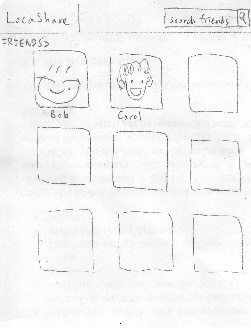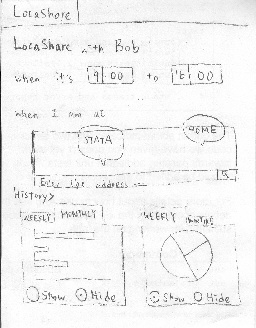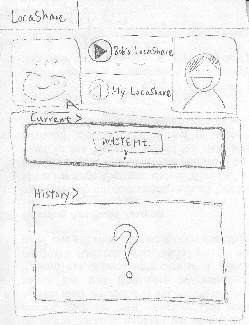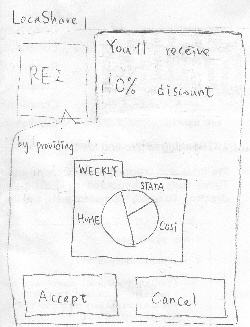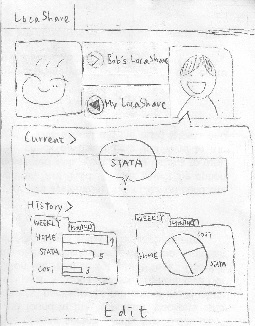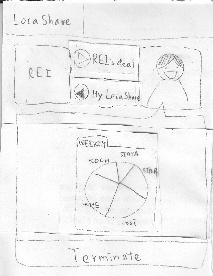Design 2:
Home Screen |
Storyboard |
Learnability |
Efficiency |
Safety |
Visibility |
|---|---|---|---|---|---|
|
When Joe logs into the |
Pros: |
Pros: |
If user wants to view deals |
Pros: |
Task 1: Add Social Contacts |
Storyboard |
Learnability |
Efficiency |
Safety |
Visibility |
|---|---|---|---|---|---|
|
To add a new social contact, |
Pros: |
Pros: |
Sources of potential |
The clock widget, |
Task 2: View real-time location of social contacts |
Storyboard |
Learnability |
Efficiency |
Safety |
Visibility |
|---|---|---|---|---|---|
|
To view real-time location |
Pros: |
Pros: |
The only error here is not |
The map is big such that |
Task 3: View offers and opt-in to create commercial contacts |
Storyboard |
Learnability |
Efficiency |
Safety |
Visibility |
|---|---|---|---|---|---|
|
The mail box animation pops up |
Pros: |
Cons: |
Errors can result by |
The mail box animation |
Task 4: View aggregate information of social contacts |
Storyboard |
Learnability |
Efficiency |
Safety |
Visibility |
|---|---|---|---|---|---|
|
The steps for this task is almost |
Pros: |
Pros: |
The only error here is not |
The tab menu and |
Task 5: Edit social contacts |
Storyboard |
Learnability |
Efficiency |
Safety |
Visibility |
|---|---|---|---|---|---|
|
Joe enters Bob's page as in Task 2. |
Pros: |
Edit can be done by |
The only error here |
The "Edit" button is salient |
Task 6: Edit commercial contacts |
Storyboard |
Learnability |
Efficiency |
Safety |
Visibility |
|---|---|---|---|---|---|
|
To edit a commercial contact. |
Pros: |
Pros: |
One of the errors might occur |
The coupon information and |

